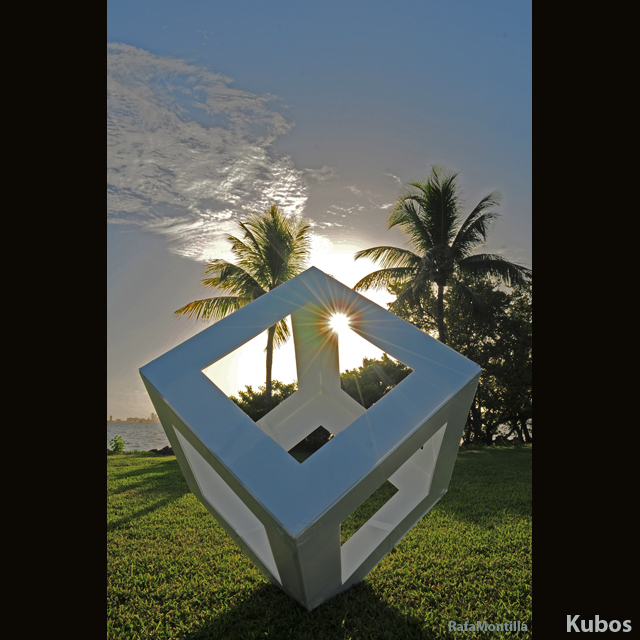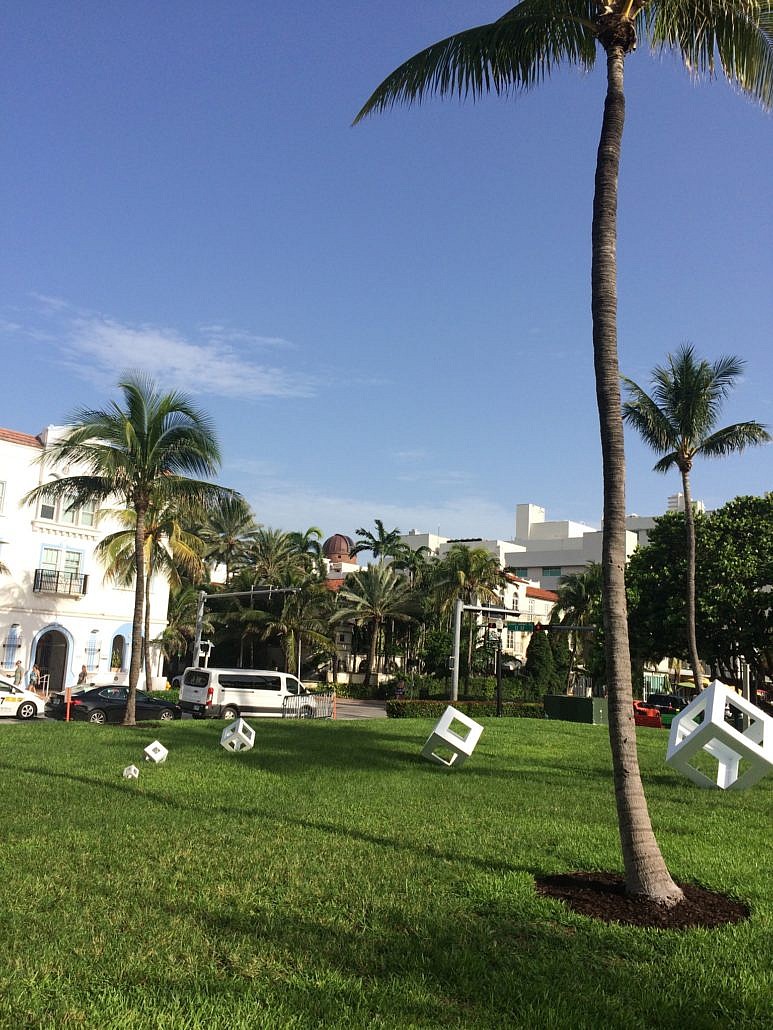Floating Cubes
Floating Cubes
Key Biscayne Marina
















Floating Cube
These floating cubes were largely inspired by the works of Venezuelan artists Jesús Soto and Alejandro Otero. When I was a child, my father took me to the Museo de Bellas Artes and the Galería de Arte Nacional in Caracas. There, I saw Soto’s Penetrables for the first time, in which the great artist dematerializes the shape of a huge cube, using hanging strings. In this work, the viewer can both perceive and participate. Soto affirmed: “When you enter a Penetrable, you have the sensation of being in a whirlpool of light, a total plenitude of vibrations. The Penetrable is a kind of concretion of that plenitude in which I make people move and make them feel the body of the space.”
The works of Alejandro Otero, belonging to the collection of the Jesús Soto Museum of Modern Art in Ciudad Bolívar, Venezuela, were also an inspiration for me. I remember Four Blades Mill (1985), where Otero deconstructs the faces of a cube, a solution that he later integrates into larger-format sculptures such as the Abra Solar located in Plaza Venezuela, Caracas. Four Blades Mill is a cube supported at one of its corners. Inside, four aluminum blades rotate with the wind. The work makes the public aware of the elemental energies of the planet that, like the wind, are necessary for the maintenance of life. The artist declared “art is a way of reinforcing life”, a concept that becomes monumental in Abra Solar.
My idea to place sculptural pieces on the sea’s surface, inspired by the works of Soto and Otero described above, reflects my upbringing near the sea and my understanding of its immensity.
This practice would allow me to make the emptiness of the sea visible and palpable. In my first sketches, I drew cubes floating on water. Years later, I refined those ideas, and when I wanted to materialize them, I had a lot of difficulties getting the cubes to stand upright at one of theircorners over the sea.
Day after day, police officers passed by and saw me trying to achieve this purpose. One afternoon, they got out of their patrol cars and asked me curiously if I thought I would achieve it one day. I replied, “I'm sure I will”. When I managed to stabilize the largest cube on a vertex on the water, it was relatively easy to float the other cubes I had produced for this installation. I was able to install five cubes in decreasing size progression in the Key Biscayne Marina, a place I had already at it’s one of my favorites for taking sunset photos. Shortly after the installation, one of the policemen who used to watch me, met me by chance at a gas station. He asked if, at last, I
had managed to suspend the cube above the sea. I answered with satisfaction that I had and showed him the installation photos.
I like public art a lot. Not only it can be enjoyed by many people, especially children, but in addition to enjoyment, public art creates awareness in the observers, making them see that each person, animal, plant or microorganism belongs to nature and to the cosmos, and we must preserve them for future generations.